NECROPOLIS NOW
Thu. April 14, 2005Categories: Abstract Dynamics
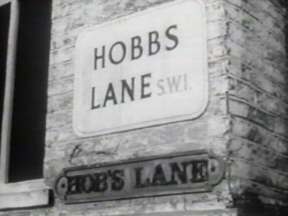
londonunderlondon, very kindly described by Autonomicforthepeople as ‘ like a beautiful dark dream. Abandoned underground tunnels, troglodytes, fleeting Drumz churning , shy animals, ethereal grime…’ was broadcast on April 4th on Resonance FM. The mp3 is now available from the Resonance website but due to my lo-fi radio-hostile mix much of the detail got lost when it was broadcast, so I’d recommend anyone who wants to hear it to get the original waves from me. I’m gradually posting out CDs to the Dissensus kru who requested em; any k-punk readers who would like a copy should mail me and it will be provided.
londonunderlondon, ruff-mixed as it is, needs to be seen as a work in progress. Naturally, it isn’t anything like equal to its inspirations – which number anything from Glenn Gould’s The Idea of North, Chris Marker, Eno, David Toop – but what became clear to us as we produced it was how little punk will there is. The cyberpunk infrastructure is already there. Something like Cool Edit – an excellent programme btw – reduces sound composition to the core cyberpunk function of cut and paste. Yet the main use to which is put is to produce ‘music’ (or, worse, insufferable ‘sound art’) – what about all those interzones between music, fiction, drama, documentary, a DJ set? What is lacking is the will to explore such terrains.
Czukay suggests that we should reveal all the sound sources etc. I’m willing to do that in the end, but I’d like a few more people to hear it first. To provide a list of all the samples at the moment would be like presenting diners with a list of ingredients before they’ve eaten the meal. In the meantime, I present below the text I produced for the section we came to call Necropolis Now:
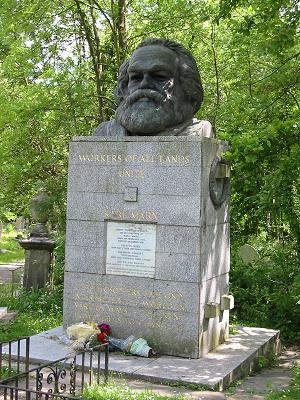
‘Vampires may start out in Rumania or Egypt, but they always end up in London.
Marx saw that, as, in the gaslit setting of the British Library, he laboured tirelessly on his interminable steampunk survey of the body of SF Kapital. ‘Capital is dead labor, which, vampire-like, lives only by sucking living labor, and lives the more, the more labor it sucks’. The task Marx sets himself is no less than to diagnose and cure a planetary geotrauma that began in London five hundred years ago.
Apocalypse is always now, and Marx is trying to cut his way out of the pre-sent. If he can’t break the time lines, the future will be nothing but more of the same. The endless end, global subordination to Kapital’s idiot cyber-Telos. ‘Time is everything, man is nothing: he is at the most time’s carcass.’
Marx writes from the very epicentre of the ongoing catastrophe, the site where the Kapital Artificial Intelligence-Parasite, made up ‘of numerous mechanical and intellectual organs’, first crash landed on earth. Since then, using the factory-farmed population of the city to provide the ‘mere conscious linkages’ it lacks, Kapital has itself become the solution to the perennial problem all Gothic entities face: how does what has never been alive reproduce?
It uses your eyes and ears, your fingers, your brain….
‘By virtue of it being value, [Kapital] has acquired the occult ability to add value to itself. It brings forth living offspring, or, at the least, lays golden eggs’.
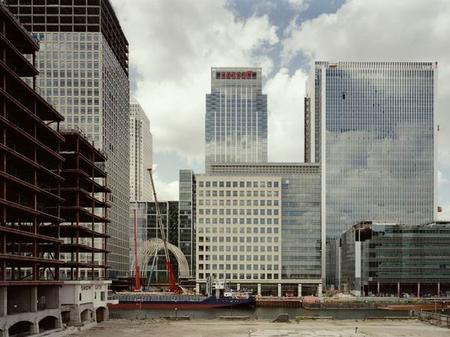
Approach from West India Quay and see what corpses have sprouted on the Isle of the Dead….
Barclays HSBC Bank of America Citigroup –
Kapital mausoleums, freezer-white canyons of Finance ICE, pointing like rigor mortis fingers into the greyish purple of the light-polluted helicopter sky. Necropolitical take-over of the docks, both functionally and spatially. No need for ships to provide global communications now.
(I had not thought that death had undone so many).
Virtual Ground Zero. If they struck surely it would be here
..
Here, where everything is already dead
In Cabot Square, descend through the mock deco hallways into the migraine hyperbright no-wonderland of the retail arcades.
The eternal noon of the living dead.
And Saturday night in the City is always dead. The high rise reptiles have slunk back to their lairs.
Finance vampires hunt by day.
And I too have been one of the dead. Duplicates have used my name while the alien parasite entity squats behind my eyes. (Marks of weakness, Marks of woe.)
Down into the tube, hanging like a slab of Bacon in the zombie meat trucks.
(A crowd flowed over London Bridge…)
The underground is the stalking zone of shambling automata.
You know this in your dreams, and in what London dreams, in the fictions it breeds. That is why the London flood barrier against the Real has had a spectacular record of failure. They were looking in the wrong places. The incursion has already happened, many times.
Fictions about invasion are already invasions.
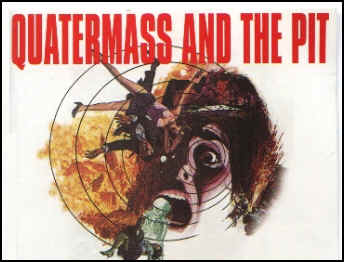
As he completes Moses and Monotheism in exile in Hampstead, Freud can see what Nigel Kneale can later see: What you inherit from your parents is death.
You come to be in a mortifying structure that precedes you. You only have a lifetime to escape.
In the London Underground, Quatermass unearths parasites far more ancient than any Marx described. Kneale poses the same question as Wells, but differently:Will earth become the second dead planet of the martians?
For Wells, the Martians that invade London from Surrey-side are extra-terrestrial pirates giving the British imperium a taste of its own medicine.
But Professor Quatermass the metapsychologist can see that there was no human life that preceded the arrival of the myrmidons of death. The discovery he makes in Hobbs End is archaeopyschic horror: human beings were only ever the carrier-bodies for the alien death drive. There is no inside, and everything in your dream home is already owned by the parasites.
That is why it isn’t only traumatic fixation that compels Londoners to keep dreaming of invasion. Something else getting in would also be something in you getting out. Destruction of the World is also flight from the strata, from the catacomb of home, tomb of the cybermen…
The TV orphans whose electronic spines tingled to Delia Derbyshire’s Dr Who theme knew this as soon as they heard it in 1963. The uncanny is always the untimely. Delia Derbyshire is no more bound to her own time than Marx or Quatermass were denizen of theirs. On the contrary, cutting up present time in the Radiophonic Workshop’s lab in Maida Vale, she is a nomad of the time streams.
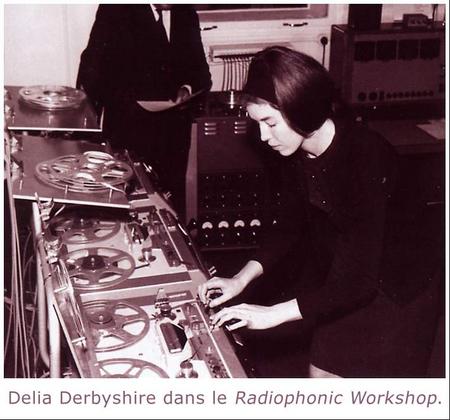
‘She used concrete sources and sine- and square-wave oscillators, tuning the results, filtering and treating, cutting so that the joins were seamless, combining sound on individual tape recorders, re-recording the results, and repeating the process, over and over again.
Television was the uhomely vortex around which the 1960s British domestic scene was organized, the chinese box display unit opening out the so-called interior onto the media landscape. The wired kids who watched, entranced, had consumed the Cuban Missile Crisis and the Bay of Pigs with their breastmilk.
They know that terror is the name for the new, and they hear in Derbyshire’s sonic construction – broadcast for the first time the day after Kennedy’s exploding head had inaugurated the sixties’ atrocity exhibition – a presentiment of the decade’s megaviolence.
But they hear something else in the Radiophonic Workshop’s Audio Uncanny, which, never centre-stage in the rock Spectacle, nevertheless quickly becomes unobtrusively ubiquitious.
An alternative Now builds itself out of radio station idents and incidental music. Ear worms breed the hunger for a space in which they can propagate, out beyond the pleasure principle, on the strobing plateaus of the dancefloor….’